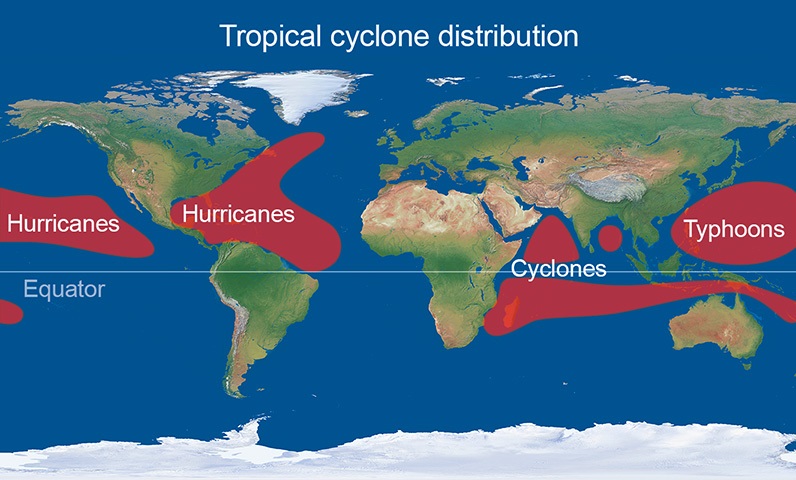How are hurricanes named?
Tropical cyclones are given names to make it easier to communicate between meteorologists and the public.
Names were first used widely in World War II and were subsequently adopted by all regions. In most regions pre-determined alphabetic lists of alternating male and female names are used. However, in the western North Pacific and North Indian Oceans the majority of names used are not personal names. While there are a few male and female names, most are names of flowers, animals, birds, trees, foods or descriptive adjectives. The names are also not allocated in alphabetical order, but are arranged by the name of the Asian country which contributed the name.
Some meteorological organisations cycle through a set number of lists starting at "A" each year. Some continuously cycle through names without reverting to "A" each year and some start a new list each year. In the areas with cyclical lists a name will be retired if the cyclone bearing it was particularly notorious and caused loss of life.
Current list of tropical cyclone names used worldwide.

It is usual practice for a storm to be named when it reaches tropical storm strength (winds of 34 knots). However, JTWC Hawaii, NHC Miami and CPHC Hawaii also give every tropical depression an identifier in the form of two digits and a letter. The digits start at "01" each season and are incremented for each new depression in the region.
It is important to remember that although western Europe, including the Met Office and Met Éireann have adopted a similar naming convention for storms that reach us from the Atlantic Ocean, these have been done to help communicate forecasts and warnings to the public, not because these storms are the same strength as tropical cyclones.





